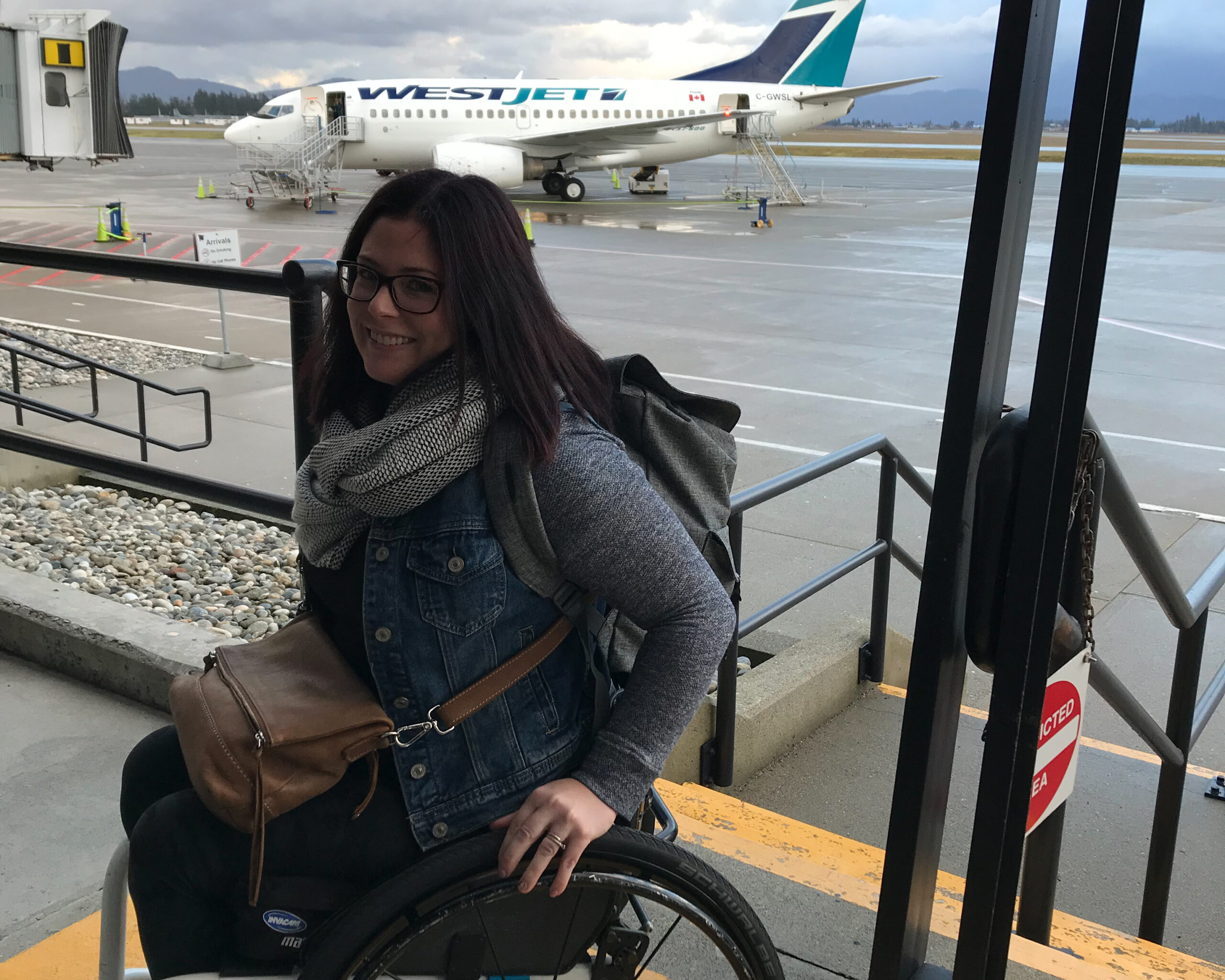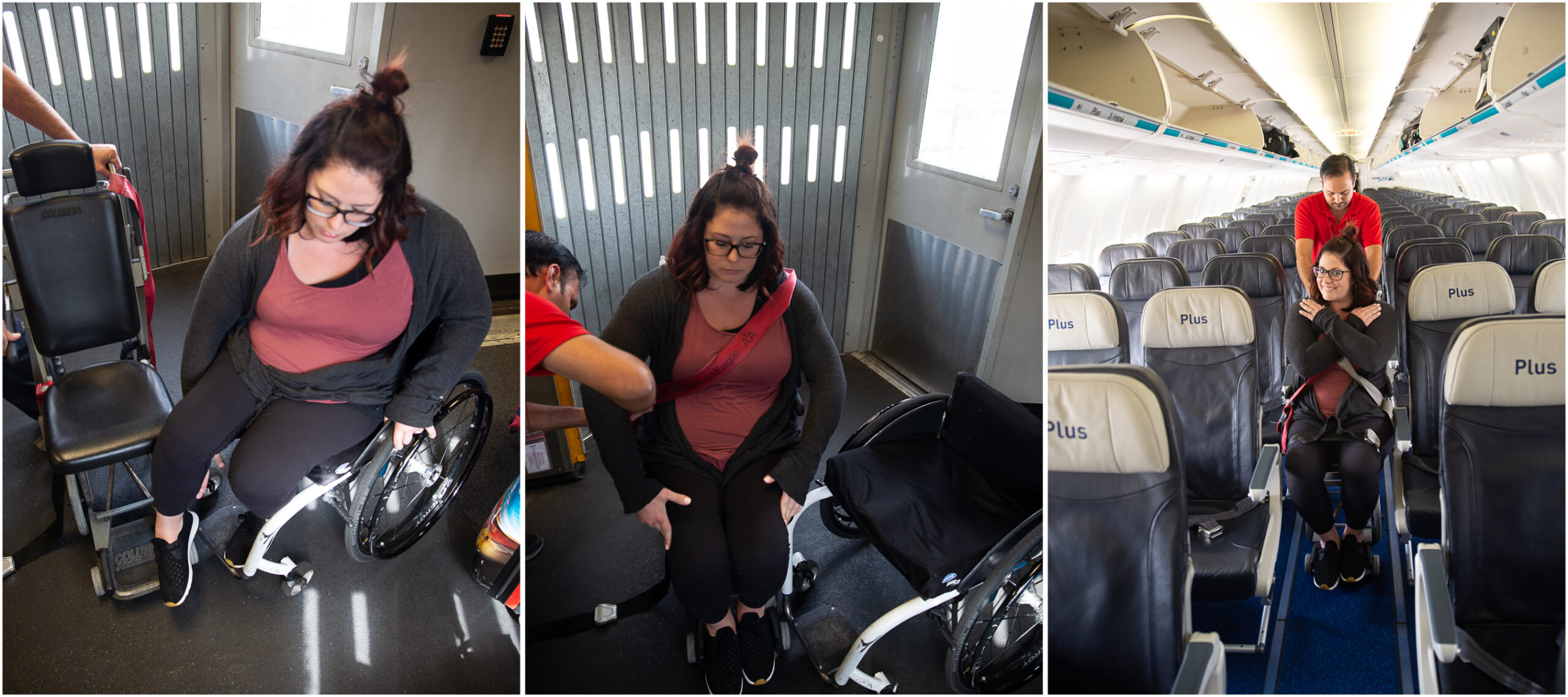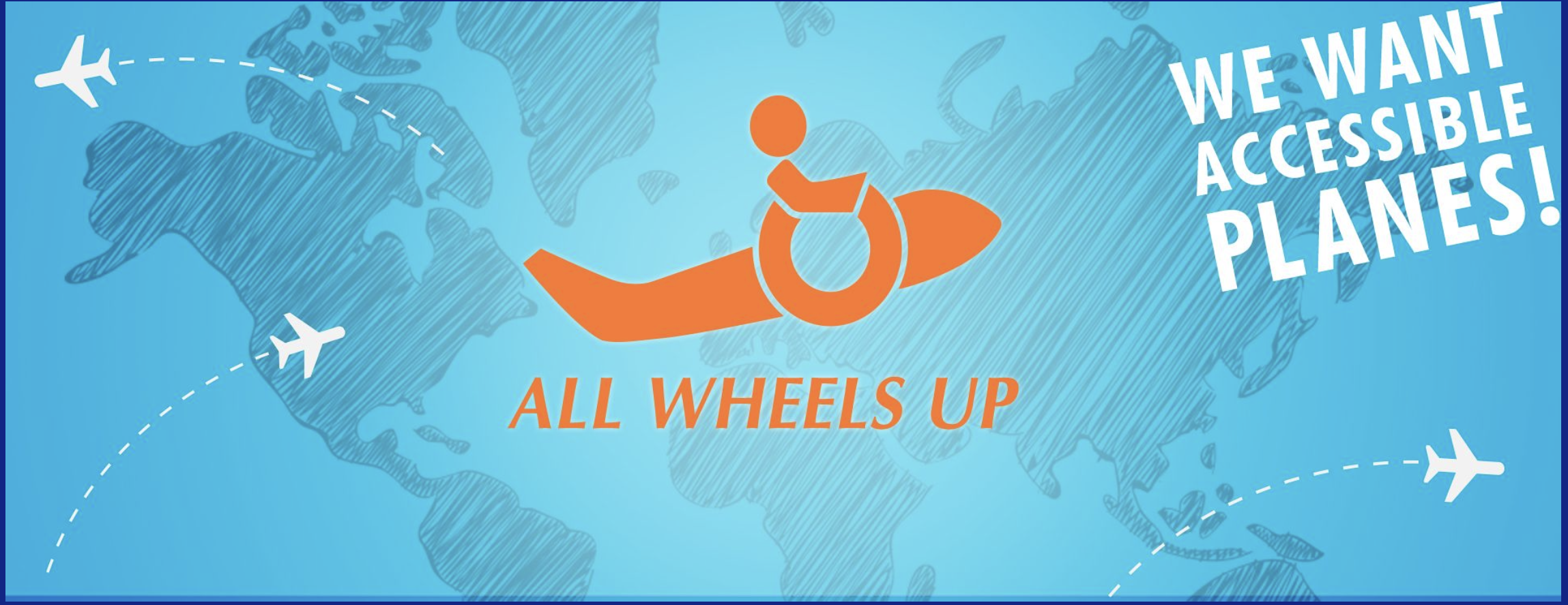By Codi Darnell
August 3, 2021
 Like so many people, I haven’t seen the inside of an airplane since before COVID became a household name. Even those who were ready and willing to jet off during the pandemic were met with the unwelcome reality that air travel was not accessible to them, that it was only for a select few whose travel plans were deemed essential. And while many people are now looking forward to boarding an airplane and once again travelling to their favourite destinations, millions of wheelchair users remain unable or unwilling to fly due to the reality they faced long before COVID – air travel is not wheelchair accessible.
Like so many people, I haven’t seen the inside of an airplane since before COVID became a household name. Even those who were ready and willing to jet off during the pandemic were met with the unwelcome reality that air travel was not accessible to them, that it was only for a select few whose travel plans were deemed essential. And while many people are now looking forward to boarding an airplane and once again travelling to their favourite destinations, millions of wheelchair users remain unable or unwilling to fly due to the reality they faced long before COVID – air travel is not wheelchair accessible.
It’s not that wheelchair users don’t want to travel or that they don’t have the means necessary to travel. It’s that when we get in an airplane, we put our independence on the line. Because unlike in buses, trains and many other types of transportation, a wheelchair user cannot stay in their mobility device on board an airplane.
Instead, we move into a small aisle chair to be pushed onto the plane while our wheelchair is put into the hands of airline staff and transferred to the cargo hold. In theory, it doesn’t seem like a terrible plan. It’s not until you start to understand the value of these mobility devices and hear the many accounts of negligence towards them that the problem becomes clear.
Most full-time wheelchair users rely on customized manual or power wheelchairs. These chairs are carefully measured and built specifically for the person using them and are accompanied by a price tag of anywhere from $5,000 to well over $50,000. But while the monetary cost for these mobility devices is high, the value they carry for the person they belong to is priceless.
 These devices are a wheelchair user’s independence. They are extensions of our bodies that we know how to maneuver around an often frighteningly inaccessible world. And when we board an airplane, we hand them over to people who are not only insufficiently trained to move, lift and store these devices, they are insufficiently trained to understand their value. Which is why our wheelchairs are being broken.
These devices are a wheelchair user’s independence. They are extensions of our bodies that we know how to maneuver around an often frighteningly inaccessible world. And when we board an airplane, we hand them over to people who are not only insufficiently trained to move, lift and store these devices, they are insufficiently trained to understand their value. Which is why our wheelchairs are being broken.
According to a recent article in the Washington Post, airlines in the United States have lost or damaged more than 15,000 wheelchairs or mobility scooters since reporting of such things was mandated in late 2018. That’s approximately 29 wheelchairs a day that are being damaged or lost by airlines in the United States.
I’m going to repeat that – approximately 29 wheelchairs a day are being damaged or lost by airlines in the United States.
That’s 29 people every day who disembark an aircraft with the anticipatory buzz of discovering a new city or the comforting relief of being home, only to discover that they cannot get themselves to baggage claim let alone anywhere else. Twenty-nine people whose independence is, quite literally, pulled out from underneath them.
Article after article makes the wheelchair-legs comparison, asking the (presumably able-bodied) reader to imagine arriving at their destination only to realize that the airline broke their legs. It’s a great comparison, makes total sense; except, it’s so far-fetched that it’s almost unimaginable.
If airlines were reporting that their negligence was resulting in multiple broken legs every day, they’d be sued into bankruptcy. Or what if it was pets? Imagine that each and every day, 29 pets were injured or lost by airline staff. Would we just accept those risks, cross our fingers and send “Fido” off to the cargo hold? No, I don’t think we would. And just like legs and pets, wheelchairs are a lifeline.
 One company does have a solution. All Wheels Up is a non-profit organization that is working towards a system that would allow wheelchair users to wheel their manual or power chair on board an airplane and remain in their chair for the duration of the flight. In fact, they are the only organization crash testing wheelchair tie-down systems for use in a commercial aircraft. However, there is no timeline for when these systems could actually be in use, which still leaves wheelchair users uneasy every time their devices are loaded onto an airplane.
One company does have a solution. All Wheels Up is a non-profit organization that is working towards a system that would allow wheelchair users to wheel their manual or power chair on board an airplane and remain in their chair for the duration of the flight. In fact, they are the only organization crash testing wheelchair tie-down systems for use in a commercial aircraft. However, there is no timeline for when these systems could actually be in use, which still leaves wheelchair users uneasy every time their devices are loaded onto an airplane.
Of course, as with all problems, there is more than one solution. Many wheelchair users would still prefer to sit in a standard airplane seat and be able to see their mobility device stored safely. But until a solution is found, until organizations like All Wheels Up sees their purpose become a reality, airlines need to do better. Staff should be trained to care for wheelchairs as diligently and carefully as they would the person who depends on them. They need to be trained to see the independence that wheelchairs facilitate and understand how any amount of damage to the wheelchair is a detriment to its user’s existence.
There’s no question that air travel revolutionized the world. The fact that we can board a plane and be on the other side of the planet in a matter of hours, discovering different landscapes, languages and cultures, is something I think a lot of us take for granted. But now, it’s the airline industry that needs to be revolutionized so that everyone can fly confidently.
